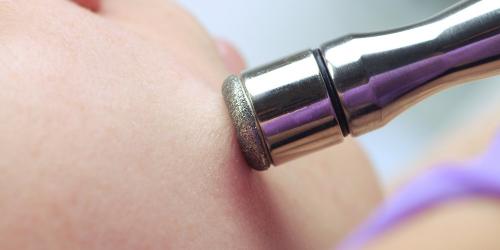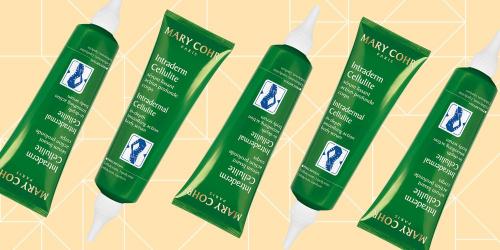In the United States, studies have found that 80% of women suffer from stretch marks . And studies in France corroborate this statistic. What are their causes? How to escape? The specialists explain us.
Stretch marks, a very particular scar
It is indeed a scar, since mechanically it corresponds to a rupture of the elastic fibers of the dermis. The guilty ? Hormonal upheavals, resulting in hyper secretion of glucocorticoids. These decrease the synthesis of our fibroblasts and slow down their renewal. At the same time, an overproduction of metalloproteases is keen to destroy our collagen and elastin fibers.
Consequences: less fibroblasts and lower quality. Added to this skin disaster is an inflammatory phenomenon caused by a mechanical tension on our tissues in case of overweight or pregnancy: the fibers break, and stretch marks appear. Red first, they progressively fade.
Good to know: It is easier to prevent stretch marks, then treat them when they are red, more recent, than when, older, they have become white, pearly. So do not wait!
Specific assets to treat our damaged fibers
No need to think about acting on glucocorticoids. On the other hand it is essential to compensate for the fragility of the skin by softening it, strengthening its fibers and hydrating it to the maximum.
To soften the epidermis , we bet on safe values such as vegetable oils . Hazelnut oil, argan oil for example, have a particularly pleasant texture and fight at the same time against the oxidative stress that weakens our fibroblasts. D-Panthenol is an excellent relipidant that helps the skin to manufacture itself its own lipids for a barrier function perfectly operational.
To boost our elastic fibers , we must fight against metalloproteases, these enzymes that strive to destroy them. A good point for Centella Asiatica , rich in asiaticoside acid that plays a dual role: it facilitates the production of fibroblasts and limits the destruction due to metalloproteases. In addition the Centella, called tiger grass is an excellent healing so beneficial to red stretch marks (the legend says that tigers rolled on his leaves to heal their wounds). Good choice again: proline derivatives, an amino acid that is one of the components of collagen. Glycolic acid is also interesting because it acts on cell renewal. The small size of its molecules allows it to go down deep to stimulate the synthesis of our fibroblasts.
To strengthen the skin's resistance , let's also think about silicon . Horsetail is rich like seaweed extracts (fucus).
Finally, to fight against inflammation and redness of nascent stretch marks: bisabolol , present in chamomile or Candeia tree, has good anti-inflammatory properties. Carnosine is a powerful healing agent.
In parallel, boost the hydration of your skin
To preserve its elasticity the skin also needs a lot of water (think of the cracked soils of the desert!)
On the honor roll: allantoin . From the plants it promotes cell regeneration, healing of skin attacked and is an excellent moisturizer because it increases the ability of corneocytes to capture water, just like the bark extract of a plant from Madagascar, the Katafray .
Glycerol (or glycerine ) increases the skin's ability to trap water, which diffuses into the upper layers of the skin and stays in reserve. Hyaluronic acid is an excellent humectant, such as aloe vera , and sodium pyrrolidone carboxylate, which I refer to as PCA Na on labels and which forms part of the NMF this natural hydration factor.
Last resort, treatments in aesthetic medicine
Old stretch marks, mostly pearlescent, are generally resistant to cosmetic care. They can nevertheless be treated by the C02 laser or the fractional radio frequency. They will never disappear altogether but they will be less visible. Finally for very wide stretch marks the surgeon can be of a last resort: he brings the edges of healthy skin closer together and the sutures. Result? A fine scar certainly, but much more discreet.
Note: Cushing's syndrome causes pathological stretch marks. It is an endocrine disorder associated with high levels of cortisol. Treatment then comes under medicine.
Thanks to Lionel de Benetti, Cosmetologist Engineer, Aurélie Guyoux, Director of Research and Innovation Naos, Pierre-Louis Delapalme, Co-President of Biologique Recherche, Dr. Nicolas Bachot, Dermatologist and Director R & D Labs DermEden.




